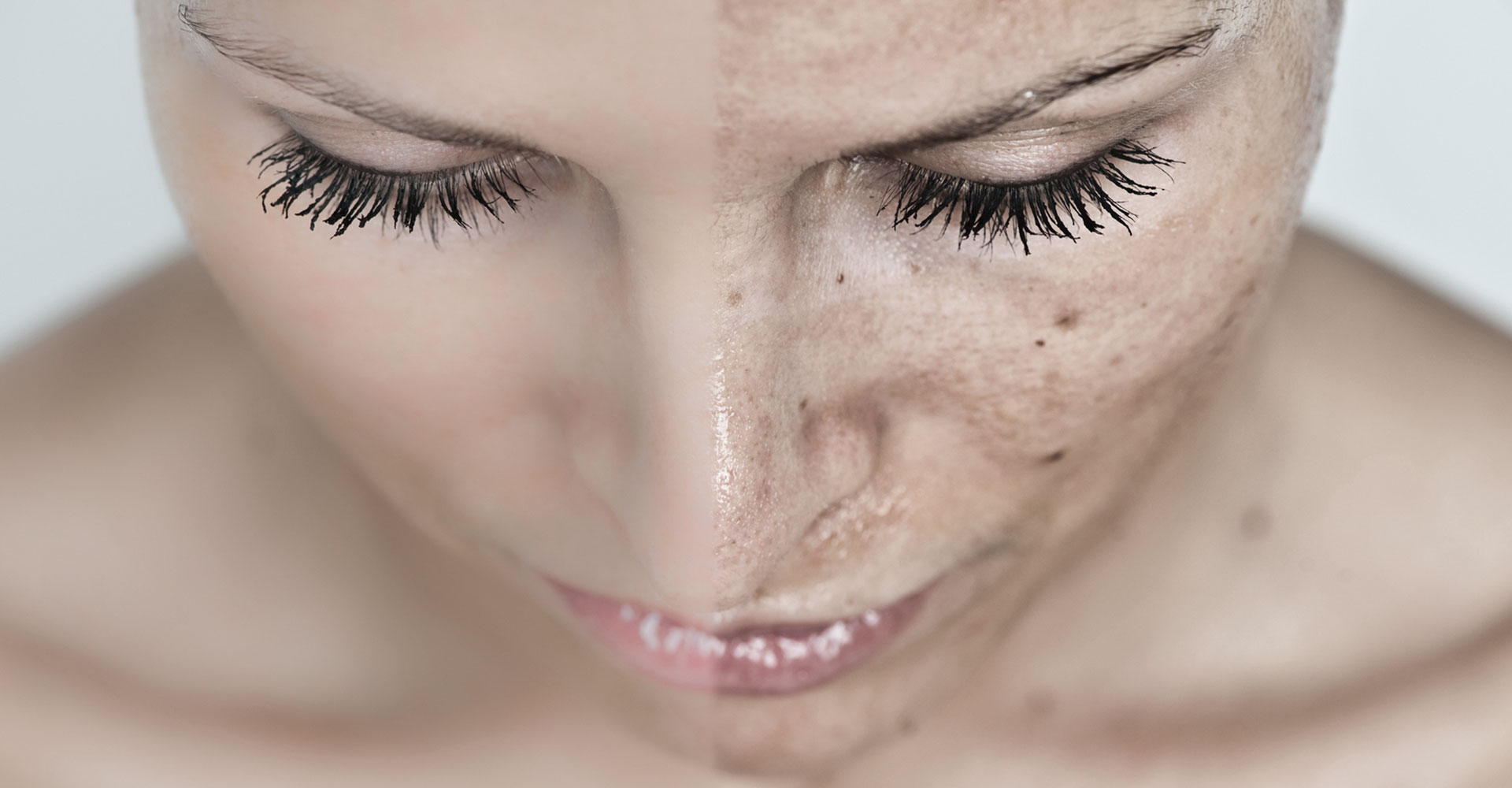
21 Jun Have you got a dirty face? No, that’s just my hyperpigmentation :(
I had a client in the clinic last week who was at her wits end. Aged 37, she had a slew of unsightly dark brown patches all over her face. And they seemed to be getting more pronounced as the years ticked by.
“I just look like I have a dirty face ALL the time – even with make up on!” she wailed.
The patient in question did have quite an extreme type of facial pigmentation known as melasma, which is characterised by brown patches on the upper lip, upper cheeks, forehead and chin.
Whilst the condition is totally harmless (and therefore can make some feel like they’re making a fuss about nothing) the fact remains that the face can look, well, dirty – not to mention very patchy.
As with chronic acne, this can really affect a person’s confidence. In fact, American actress Brooke Burke has made a number of emotional television appearances documenting her melasma journey and struggle to find the right treatment.
Closer to home, I’m certainly seeing increasing numbers of women coming to me wanting to even out their skin tone and reduce these mottled brown patches, sun spots, liver spots and large freckles on the face.
Before we look at treatment however, it’s important to look at the cause of melasma and hyperpigmentation.
Safe to say, there are two main culprits: over exposure to sun and hormone changes (which could be caused by pregnancy or use of the contraceptive pill). These can trick the skin into producing too much melanin – the brown pigmentation which gives you a tan – which manifests itself as ugly patches.
Many clients are upset by the fact that they’ve been faithful applicators of high factor daily SPFs for a number of years. What they don’t realise is that in fact UVA damage can take around 20 to 30 years to develop, suggesting that they probably weren’t using adequate UVA protection in their formative years.
It’s not all bad news and there are some excellent treatments available. Read on to find out which could work best for you:
Also known as photo-rejuvenation, IPL can be very effective at erasing mild sun damage such as irregular pigmentation, light brown spots and freckles. It’s a non-invasive treatment that uses high intensity pulses of visible light to improve the appearance of skin. The light energy penetrates below the skin’s surface to target the unwanted brown pigment, whilst the heat breaks down this pigment into tiny particles. These rise to the skin’s surface as scabs or get carried away in the body’s lymphatic drainage system.
IPL is gently applied to the skin via a hand piece and is usually pain-free but an anaesthetic cream can be used if the light pulses become uncomfortable. Treatments usually last about 20 minutes and some compare the sensation to a light pinch or snap of a rubber band.
The good news is, there is no down-time required after IPL and results can be seen in three to five sessions!
Cost: £200 per session
The procedure known as chemical peeling (or chemexfoliation to give it its proper name) involves the application of a chemical solution to the surface of the skin to safely remove its top layers.
There are three types of peel – superficial, medium and deep – and the amount of skin removed will depend on the type of chemical used, the strength of the product and how long it is left on the skin.
We advocate the use of The Perfect Peel which blends glutathione (a powerful anti-oxidant), kojic acid, TCA, retinoic acid, salicylic acid, phenol and vitamin C. The Perfect Peel delivers some absolutely outstanding results for skin affected by hyperpigmentation. What’s more, it’s non-invasive, relatively pain-free and involves downtime of only five to seven days. The Perfect Peel has had some rave reviews recently which you can read about here and here.
Cost of single treatment (The Perfect Peel): £350
An alternative treatment for age spots caused by the sun’s harmful rays is Cryotherapy. We use a Cryopen which emits a fine jet of nitrous oxide under high pressure to the localised area. This freezes the unwanted cells (without damaging healthy tissue). After treatment a blister will form, followed by a scab which should fall off after about a week to ten days.
Sessions take between five to fifteen minutes and optimum results will be seen three to six weeks after treatment.
Cost: £100-£300 depending on size of affected area.
So you see, there’s just no need to suffer in silence!
If you’d like more advice on how to treat hyperpigmentation affecting any part of your body, get in touch today on 0330 11 8547 or email at [email protected].


